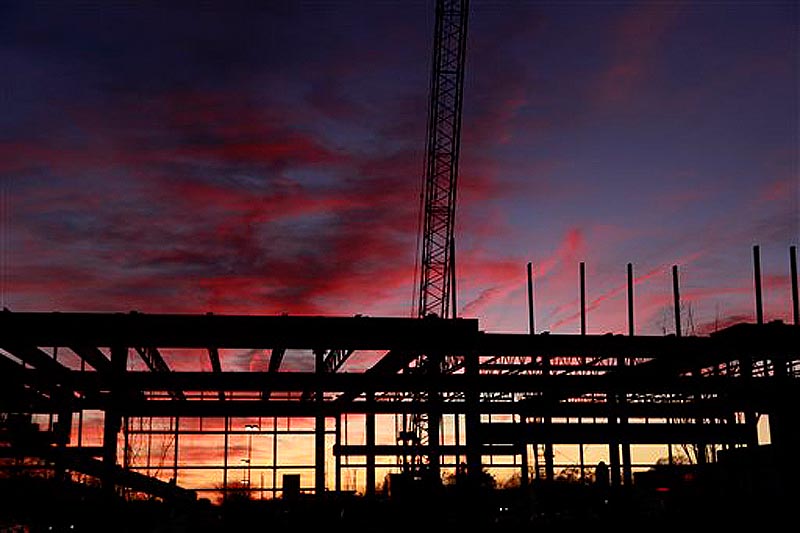WASHINGTON — The economy is picking up. If only job growth would follow.
A spate of data Thursday showed U.S. factories grew last month at the fastest pace since June, construction spending increased for a third straight month, and both retail sales and auto sales rose in November.
But the number of people applying for unemployment benefits is still too high to signal strong hiring.
The reports offered a mixed picture for the economy one day before the government reports on job growth in November. Economists project that employers added a net 125,000 jobs. That’s not enough to lower the unemployment rate, which is projected to stay at 9 percent for the second straight month.
And manufacturers could face strains overseas in key export markets, especially if Europe’s debt crisis worsens and leads the continent into another recession.
For now, factories are growing. The Institute for Supply Management, a trade group of purchasing managers, said Thursday that its manufacturing index rose to 52.7 in November, up from 50.8 in October. Any reading above 50 indicates expansion. Factories have grown for 28 straight months.
Bradley Holcomb, chair of the ISM’s survey committee, said manufacturers “are cautiously more optimistic about the next few months based on lower raw materials pricing and favorable levels of new orders.”
Still, companies have tempered their outlook with concerns about future economic growth, government regulation and the debt crisis in Europe, he added.
New orders rose to a seven-month high and production increased, according to separate indexes in the report.
Ian Shepherdson, an economist at High Frequency Economics, said the gains suggest factory output will expand at an even faster pace next month.
“The economy seems finally to be developing real momentum; growth is accelerating,” he said in a note to clients.
But a measure of factory employment fell. The drop indicates manufacturers are still hiring, but at a slower pace than the previous month.
“Manufacturers are trying to meet demand without significantly increasing their work force,” said Ryan Wang, an economist at HSBC Securities.
Worker productivity rose in the July-September quarter by the most in 18 months, while labor costs fell, the government said Wednesday.
A more productive and less-costly work force can boost corporate profits. But unless companies see more demand, they’re unlikely to step up hiring.
And manufacturers could soon see less demand overseas. Most economists expect Europe’s financial crisis to tip that region into recession next year. About 20 percent of U.S. exports are shipped to Europe.
China, the world’s second-largest economy, is also slowing. Manufacturing in China contracted in November for the first time in nearly three years, according to business surveys released Thursday.
Separately, the Labor Department said the number of people who applied for unemployment benefits last week rose above 400,000 for the first time in four weeks. The increase comes after applications had drifted lower over the past two months.
About 7 million people are still receiving benefits. House Republicans said they are drafting legislation to continue an extended benefits program set to expire at the end of this year. That program provides up to 99 weeks of aid in states with the highest unemployment rates.
Another report showed that U.S. builders spent more in October on new homes, offices and shopping centers. Construction spending rose for a third straight month, the Commerce Department said. Despite the gains, overall construction spending remained depressed.
The projected job growth in November would be an improvement from the previous month, when the economy added just 80,000 jobs.
Some economists are more optimistic after payroll provider ADP said Wednesday that companies added 206,000 workers last month, the most this year. That survey doesn’t include government agencies, which have been cutting jobs.
Other economic indicators reinforce the outlook for an improving economy. Retailers reported a strong start to holiday sales over the Thanksgiving weekend, consumer confidence surged in November to the highest level since July, and Americans’ pay rose in October by the most in seven months.
Those reports have caused many economists to forecast a pickup in growth in the final three months of the year, to about a 3 percent annual rate. That would be an improvement from growth of 2 percent in the July-September period.
Send questions/comments to the editors.



Success. Please wait for the page to reload. If the page does not reload within 5 seconds, please refresh the page.
Enter your email and password to access comments.
Hi, to comment on stories you must . This profile is in addition to your subscription and website login.
Already have a commenting profile? .
Invalid username/password.
Please check your email to confirm and complete your registration.
Only subscribers are eligible to post comments. Please subscribe or login first for digital access. Here’s why.
Use the form below to reset your password. When you've submitted your account email, we will send an email with a reset code.